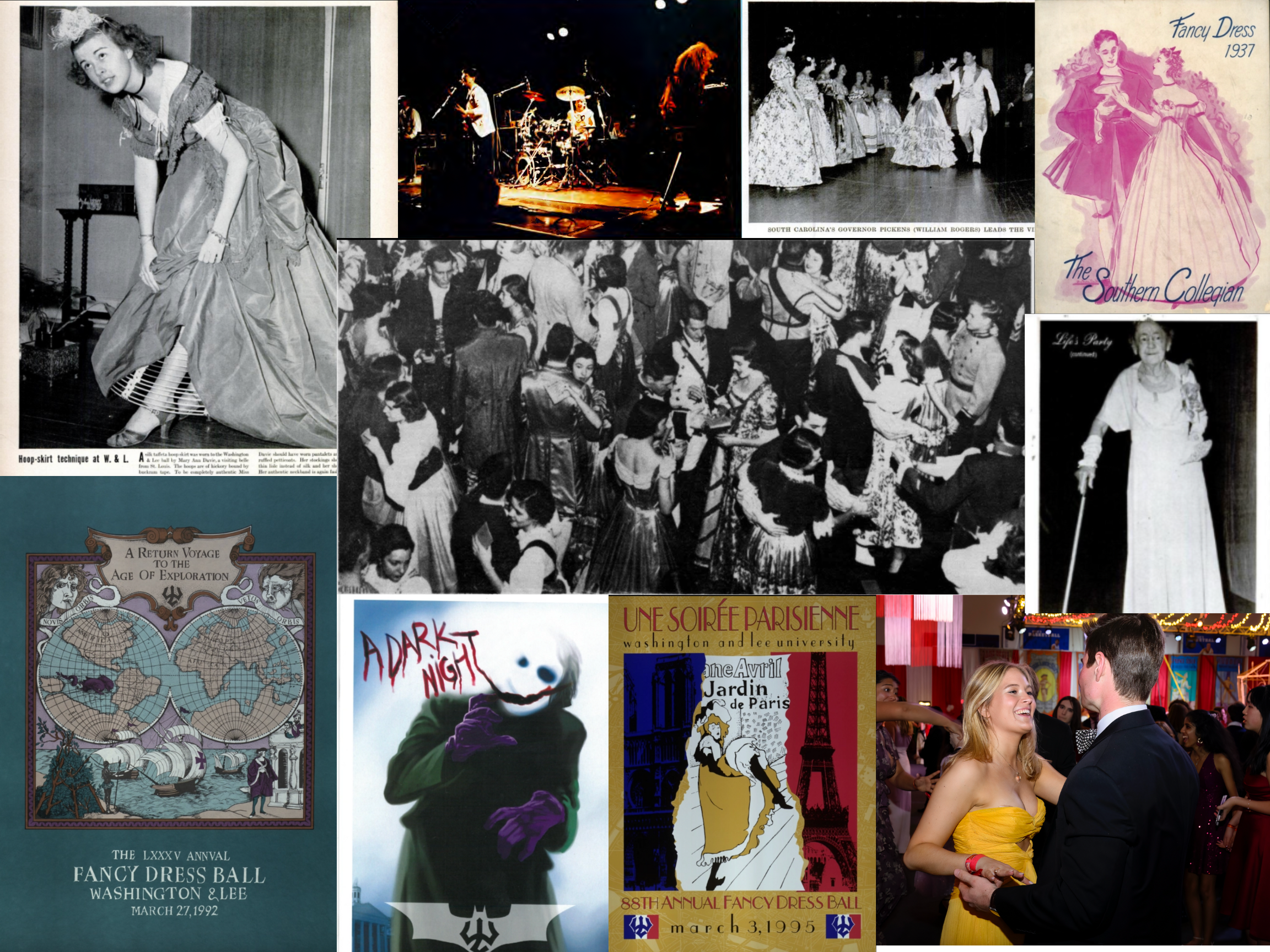At Washington and Lee
Washington and Lee University is a small liberal arts school located in Lexington, VA. With its geographical location and historical legacy, Washington and Lee University fosters a campus atmosphere that values tradition and etiquette through student's educations and social lives.
One can see this through Fancy Dress, an annual black-tie event at Washington and Lee University, typically held in the winter semester. Now planned and coordinated by the Fancy Dress committee, each year has a unique theme with corresponding decorations. It is an event Washington and Lee students look forward to every year.
This tradition was started by Librarian Annie Jo White in 1907, when she threw a costume party for some of the current students at the time, done on a very tight budget. With the party being of great success, White wanted to make this event an annual affair for more members of the student community. From this, Fancy Dress grew in popularity, with more students attending and more funding from the school. Fancy Dress remains one of Washington and Lee’s biggest events every year.
Historical Roots
Historically, fancy dresses were typically masquerade balls where members of the elite would dress up in costumes. These balls allowed attendees to show off their wealth and “negotiate” their social presence (Mitchell 2). From its inception at Washington and Lee, students attending this event would dress up in costumes related to the year’s theme, likely how the annual event got its name. And as one of the top liberal arts schools in the nation, students who attend Washington and Lee can be considered a part of the elite ("Washington and Lee University Rankings").
Over time, fancy dresses have more functional over the years, as also seen in the attire Washington and Lee students wear today. It is acknowledged that these masquerades described above "bear little resemblance to the fancy dress balls of the next century” (Mitchell 1-2). While Washington and Lee's Fancy Dress has it own unique spin, it has historically followed social convection and rules to high society formals.
Women who attend this annual event were supposed to wear clothes that were “rich and elegant” and full length, while men were supposed to wear evening dress, which consists of tailored suits or tuxedos (Etiquette: Rules & Usages of the Best Society 130). For attendees of Washington and Lee’s Fancy dress, this is what guests typically wear. The book also goes into to discuss what such balls for the elite were like. Events like these required good music and attendees to dance, as that is what made a successful event (141). With a hand-selected live band every year, guests at W&L’s Fancy Dress can be sure to enjoy good music and dancing with their peers. Furthermore, the planners of Fancy Dress used to include invitations with the name of invited guests throughout the 20th century (140). The students are expected to dress and act at these events in ways that have been have been historically pre-disposed and not developed solely at the university.
